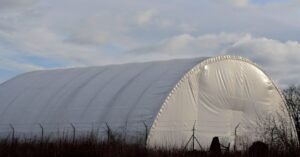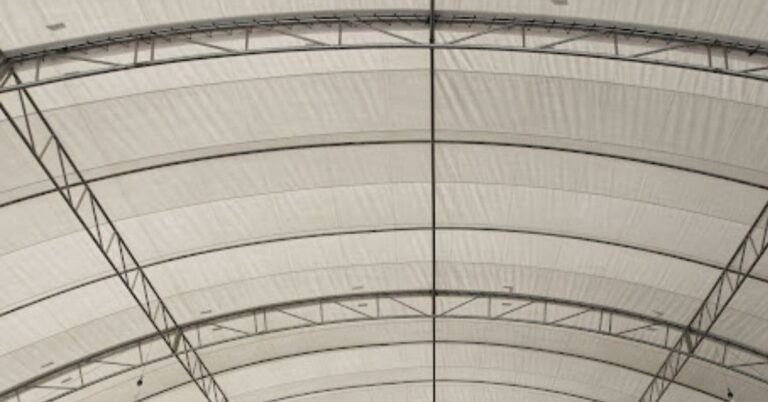Fabric buildings provide versatile, durable, and cost-effective solutions for a wide range of industries. These structures are engineered to withstand harsh weather conditions while offering quick installation and customizable designs tailored to specific operational needs. From agriculture and mining to warehousing and logistics, tension fabric structures deliver reliable performance with minimal maintenance. Their energy-efficient design and adaptability make them an excellent choice for businesses seeking long-term value and functionality.
Table of Contents
- Exploring the Role of Fabric Buildings Across Diverse Sectors
- Key Benefits of Fabric Structures for Industrial Applications
- Why Professional Installation Outperforms DIY Fabric Building Projects
- Final Thoughts: Maximizing Long-Term Value with Fabric Structures in Alberta
In Alberta’s diverse industrial landscape, businesses are increasingly turning to innovative solutions that combine durability, flexibility, and cost-efficiency. Fabric buildings have gained significant traction as a reliable alternative to traditional structures, offering adaptable designs tailored to meet specific operational needs. These structures are valued for their ability to withstand harsh weather conditions while providing quick installation and minimal maintenance.
For industries such as agriculture, mining, and warehousing, fabric buildings Alberta offer practical advantages that enhance productivity and reduce overhead costs. Businesses looking to explore the potential of tension fabric structures can find valuable insights and options at fabric buildings designed for Alberta’s unique challenges.
With their energy-efficient design and customizable features, these structures are proving to be a smart investment for businesses aiming to stay competitive in a demanding market.
Exploring the Role of Fabric Buildings Across Diverse Sectors
Fabric buildings have become a cornerstone for industries seeking adaptable, durable, and cost-effective infrastructure solutions. Their versatility makes them suitable for a wide range of applications, from protecting equipment in mining operations to housing livestock in agricultural settings.
Understanding the Versatility of Fabric Buildings in Alberta
Fabric buildings are designed to meet the unique demands of Alberta’s challenging environment. Key attributes include:
- Quick installation times allow businesses to operate without delays.
- Resistance to harsh weather conditions such as snow and high winds.
- Customizable designs tailored to specific operational needs.
- Energy-efficient insulation reduces long-term utility costs.
These features make fabric buildings a practical choice for industries that require reliable infrastructure without compromising on flexibility or performance.
Applications Across Key Industries
Fabric buildings are not limited to a single sector; their adaptability allows them to serve diverse industries effectively. Here’s how they are being utilized:
Agriculture and Livestock:
- Sheltering livestock during extreme weather conditions.
- Storing feed and equipment securely year-round.
- Providing ventilated spaces to improve animal health.
Mining and Construction:
- Housing equipment and machinery to prevent damage.
- Offering temporary workspaces for on-site operations.
- Withstanding remote and rugged environments.
Warehousing and Logistics:
- Creating additional storage space quickly and cost-effectively.
- Protecting inventory from moisture and temperature fluctuations.
- Supporting scalable solutions for growing businesses.
Each industry benefits uniquely from the adaptability and durability of fabric structures, making them a go-to option for businesses seeking innovative infrastructure solutions.
Why Fabric Buildings Are a Game-Changer
Fabric buildings offer economic and operational advantages that traditional structures often cannot match:
- Lower upfront costs compared to conventional buildings.
- Minimal maintenance requirements reduce ongoing expenses.
- Environmentally friendly materials align with green practices.
By integrating fabric buildings into their operations, businesses can achieve greater efficiency while maintaining a focus on sustainability and long-term value.
Key Benefits of Fabric Structures for Industrial Applications

Fabric structures are revolutionizing industrial operations by offering practical solutions that address the unique challenges faced by businesses in Alberta and beyond. These buildings provide a range of benefits, from enhanced durability to cost savings, making them an ideal choice for industries seeking reliable infrastructure. Below, we explore the key advantages of fabric structures and highlight their environmental and economic contributions.
Durability and Weather Resistance
One of the standout features of fabric buildings is their ability to withstand Alberta’s unpredictable climate. Key benefits include:
- High tensile strength materials resist tearing and wear.
- Superior snow load capacity secures safety during winter months.
- UV-resistant coatings extend the lifespan of the structure.
These attributes make fabric buildings a dependable option for industries operating in demanding environments.
Cost-Effectiveness and Quick Installation
Fabric structures offer significant financial advantages over traditional construction methods. Notable benefits include:
- Reduced material and labor costs compared to conventional buildings.
- Faster installation minimizes downtime for businesses.
- Scalable designs allow for future expansions without major overhauls.
For industries requiring immediate operational readiness, these cost-effective solutions provide unmatched value.
Environmental and Economic Advantages of Choosing Fabric Buildings
Fabric structures contribute to both environmental sustainability and economic efficiency. Key points include:
- Energy-efficient designs lower heating and cooling expenses.
- Recyclable materials reduce environmental impact.
- Minimal site disruption during installation preserves surrounding ecosystems.
By choosing fabric buildings, businesses can align with sustainable practices while reducing long-term operational costs.
Customizable Designs for Specific Needs
Another major advantage of fabric structures is their adaptability to meet the unique requirements of various industries. Highlights include:
- Clear span interiors maximize usable space without internal supports.
- Modular components allow for tailored configurations.
- Ventilation and insulation options enhance comfort and functionality.
This flexibility guarantees that fabric buildings can be optimized for any industrial application, from mining to warehousing.
Why Professional Installation Outperforms DIY Fabric Building Projects
While fabric buildings are designed for simplicity and adaptability, their installation requires expertise to maximize their potential. For businesses in Alberta, opting for professional installation over a DIY approach can significantly impact the quality, safety, and longevity of the structure. Below, we compare the two approaches to highlight why professional installation is often the better choice.
| Factor | Professional Installation | DIY Fabric Building Projects |
| Expertise | Skilled technicians with specialized training | Limited knowledge and reliance on general guides |
| Safety Standards | Compliance with industry regulations and best practices | Risk of overlooking critical safety measures |
| Installation Time | Faster due to experienced teams and proper tools | Slower due to trial-and-error learning process |
| Cost Efficiency | Minimized risk of errors reduces long-term expenses | Potential for costly mistakes and rework |
| Warranty Coverage | Often includes warranties for both materials and labor | No guarantees or support for installation issues |
| Customization Options | Tailored solutions based on specific operational needs | Limited ability to implement complex designs |
| Durability and Performance | Secures optimal tension and structural integrity | Risk of improper setup affecting building lifespan |
Key Advantages of Professional Installation
Professional installation offers several benefits that go beyond the initial setup, securing businesses get the most out of their investment:
- Technical Precision: Proper tensioning and alignment prevent structural weaknesses and extend the building’s lifespan.
- Compliance with Regulations: Professionals adhere to local building codes and safety standards, reducing liability risks.
- Access to Specialized Tools: Advanced equipment makes certain efficient and accurate assembly, minimizing delays.
Risks of DIY Fabric Building Projects
While DIY projects may seem cost-effective at first glance, they come with significant risks:
- Errors in installation can compromise structural integrity, leading to costly repairs or replacements.
- Lack of experience may result in missed opportunities for customization or optimization.
- Safety hazards during construction can pose risks to workers and delay project timelines.
Choosing professional installation not only enhances the performance of fabric buildings but also provides peace of mind for business owners. With expert guidance, companies can focus on their core operations while securing their infrastructure is built to last.
Final Thoughts: Maximizing Long-Term Value with Fabric Structures in Alberta
Fabric buildings offer unmatched versatility, durability, and cost-efficiency for Alberta industries. Whether protecting assets from harsh weather or providing scalable infrastructure, these structures deliver practical benefits that traditional buildings can’t match. Professional installation ensures optimal performance, safety, and long-term value, avoiding the pitfalls of DIY approaches.
With energy-efficient designs and recyclable materials, fabric buildings also support sustainability, aligning with modern environmental standards. For businesses seeking reliable, adaptable solutions, fabric buildings Alberta provide a smart investment that meets today’s demands while preparing for tomorrow’s challenges.

